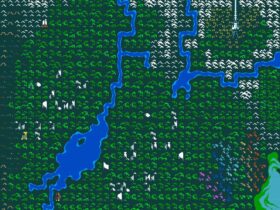Necromancy is one of the most taboo forms of magic in Thedas, nearly akin to the reputation of blood magic because of its association with the dead – this is true even in the recent Dragon Age: The Veilguard. While it isn’t outright outlawed in most of Thedas, it’s so socially taboo that most mages avoid it, and most Circles don’t teach the practice. Despite this, Dragon Age: Inquisition offers the specialization to the Inquisitor by bringing a necromancer to teach the Inquisitor and Dorian, one of the Inquisitor’s companions, specializes in the school.
One of the locations featured in Dragon Age: The Veilguard is Nevarra, with Nevarra’s Mourn Watch being one of the main factions represented. The player character, Rook, could possibly have the Mourn Watch as their background, and Emmrich, one of the companions, is a Mourn Watch mage. This sees Dragon Age: The Veilguard‘s necromancy specialization see some significant changes that improve greatly on Dragon Age: Inquisition‘s version of necromancy, both mechanically that make the specialization easier and more intuitive to use, but also makes necromancy align more closely to Dragon Age‘s necromancy lore.

Related
Dragon Age: The Veilguard Players Figure Out The Viper’s Real Identity
While Dragon Age: The Veilguard subtly hints at The Viper’s true identity, some investigative work allows fans to finally figure out who Ashur is.
Necromancy in Dragon Age: The Veilguard is Expanded Thanks to Nevarra
Unlike necromancy in other media, necromancy in Dragon Age does not bring the dead back to life, or raise the undead in the form of zombies like in Skyrim. Instead, low-level spirits, such as wisps, possess a corpse. Nevarra practices necromancy as a part of its funerary rites because of their beliefs that once a soul passes through the Fade, it displaces a spirit in the Fade. In compensation, they offer the deceased’s corpse as a home for the displaced spirit. Nevarra’s Mourn Watch has charge over the dead in the Grand Necropolis, where they ensure the dead are respected.
As a part of their duties, the Mourn Watch mages have specialized their magic into control over the forces of life and death, particularly in regard to necrotic magic. While Necromancy in Dragon Age: Inquisition involved summoning spirits, the Death Caller specialization in Dragon Age: The Veilguard has a more nuanced approach to necromancy. Rather than raising undead by summoning spirits, a Death Caller Rook instead manipulates the forces of life and death in their enemies, channeling death itself into enemies to cause damage, or pulling life from them to heal themselves.
The Necromancy Build is Intuitive and Slays
The key ability of the Death Caller, The Crypt’s Herald, is one of the most powerful in Dragon Age: The Veilguard, as it both drains enemies in an area of life to heal Rook, then immediately deals a massive amount of damage to those enemies. Rook is completely invulnerable, cannot be interrupted, and can move while casting The Crypt’s Herald, making it perfect to use while fighting most enemies, including high dragons and enemies that block most forms of attacks.
The Death Caller and necrotic abilities from the Mourn Watch in Dragon Age: The Veilguard are an improvement on Dragon Age: Inquisition simply because of the sheer variety of spells, the level of damage they do, how few enemies have resistance to necrotic damage, and because of how the class expands on the lore of the Mourn Watch and necromancy in general. And, while the aspect of summoning spirits in battle has been reduced, it’s been exemplified in other areas of Dragon Age: The Veilguard, such as in Emmrich’s companion quests and conversations, and Mourn Watch faction quests.













Leave a Reply